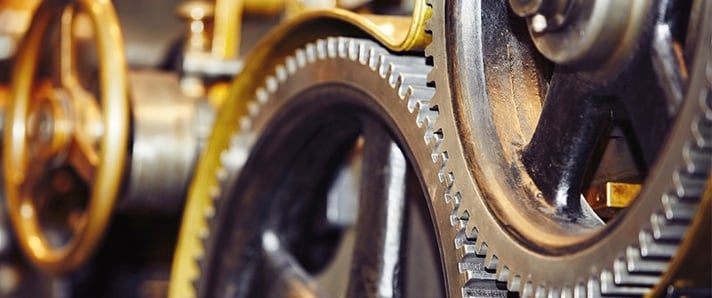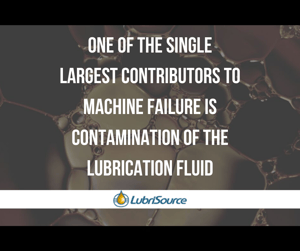
Maybe you have seen it happen. The production line seems to be running fine until suddenly everything comes to a grinding halt. One of your machine bearings have failed and now you need to stop everything until repairs can be made. But what if you could have prevented this costly failure?
One of the single largest contributors to machine and bearing failure is contamination of the lubrication fluid.
How Machine Lubrication Can Become Contaminated
Whether you are dealing with gear boxes or oil storage tanks, you are dealing with a system that essentially breathes as part of its operation. In the case of an oil storage tank or barrel, every time the oil is pumped out of the container, air is drawn in to fill the void left behind. That air is drawn in from the surrounding air, so it contains moisture and contaminants. As this process is repeated, the level of moisture and contaminants can quickly become a problem.
Some of the harmful effects of water contamination include:
- Metal Etching (Corrosion)
- Abrasive Wear in Hydraulic Components
- Dielectric Strength Loss
- Fluid Breakdown
- Additive Precipitation and Oil Oxidation
- Reduction in Lubrication Properties
Preventing Lubrication Contamination With Desiccant Breathers
 One of the most cost-effective methods of protecting against this type of contamination is the use of desiccant breathers. The breathers provide protection against outside moisture, dirt, and contamination as the tank breathes.
One of the most cost-effective methods of protecting against this type of contamination is the use of desiccant breathers. The breathers provide protection against outside moisture, dirt, and contamination as the tank breathes.
Case studies such as one at Deeter Foundry in Lincoln, Nebraska have found desiccant breathers not only the most cost effective in removing water and contaminants in their machines, they also outperformed other caps, vents and various filters.
Achieving cleanliness levels previously unattainable, desiccant breathers are a proven part of the maintenance and reliability optimization process and can deliver the following.
- Preferred cleanliness and dryness
- Simplified routine inspection and preventive maintenance
- Reduced operational cost
- Prolonged functional life of equipment
How Desiccant Breathers Work
.png?width=300&name=Copy%20of%20Increase%20the%20efficiency%20reduce%20downtime%20streamline%20spare%20parts%20and%20supplies%20sourcing.%20(2).png) Desiccant breathers use the natural qualities from two of nature’s most absorbent materials, silica and carbon, to adsorb water and remove particles before they enter your fluid system. The breather replaces existing breather/filler caps or air vents on fluid holding tanks, reservoirs and gearboxes. As the tank or gear box draws in air, it passes through both a media filter and the silica gel within the desiccant breather.
Desiccant breathers use the natural qualities from two of nature’s most absorbent materials, silica and carbon, to adsorb water and remove particles before they enter your fluid system. The breather replaces existing breather/filler caps or air vents on fluid holding tanks, reservoirs and gearboxes. As the tank or gear box draws in air, it passes through both a media filter and the silica gel within the desiccant breather.
The media filter removes particles as small as 1-2 microns. The silica gel then filters out any moisture, keeping it from entering the tank or storage unit. After passing through the breather, the air that enters the storage tank is now dry and clean.
Once the breather reaches its life expectancy, usually indicated by a change in color of the silica gel, you can either replace the entire breather or just the silica cartridge, depending on the system you are using.
Low-Cost Contamination Prevention, Strong ROI
An array of desiccant breathers are available for various applications based on varying moisture levels, flow rates and working environments. Each type honing in on target levels of cleanliness, service life, and visibility for inspection and maintenance.
Since contamination is such a major contributor to machine and bearing failure, this low-cost system saves the cost of replacing bearings and gears.
Prevention is always a better choice than shutting down to fix a problem after it occurs. And since these systems are easily installed and maintained, the ROI is very high. A maintenance person can visually inspect the breathers without shutting down the machinery and will be able to easily see if it is time to change out the filter cartridge.







